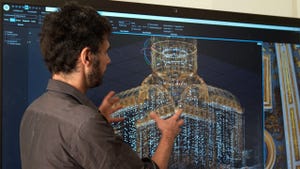The Vatican has teamed with Microsoft to unveil an AI-powered digital twin of St. Peter’s Basilica allowing those celebrating the Holy Year in 2025 to experience it virtually, no matter where they are.
A Virtual Experience for a Global Audience
The concept for this innovative project came about during a visit to the basilica in 2022, when Cardinal Mauro Gambetti and Microsoft president Brad Smith were admiring Michelangelo’s La Pietà statue. They agreed that it would be valuable to share the significance of these iconic artworks in a manner that is both "understandable and accessible" to a wider audience.
This initiative also stems from Microsoft’s collaboration with Vatican officials that began in 2018, when they launched the "Rome Call for AI Ethics," a global commitment by organizations to uphold key ethical principles in the development of emerging technologies.
Building the Digital Twin
The digital twin was built through a combination of photogrammetry, AI, and digital preservation. Iconem, a leader in digital preservation based in Paris, used advanced photogrammetry and AI to create 3D replicas of the world’s most famous historic landmarks and archaeological sites.
Iconem created the digital twin of the Basilica by taking more than 400,000 high-resolution images and spending three weeks scanning the Basilica with the help of drones, cameras, and lasers. All that was processed by Azure before it was securely backed up and stored in Azure Cloud.
Enhancing Visualization
AI-generated imagery taken from Iconem’s photogrammetry data enhanced visualization of both the interior and exterior of the Basilica, allowing visitors to explore every intricate detail from anywhere in the world.
The digital twin includes immersive virtual views along with an app and interaction features. Cardinal Gambetti told reporters at a Vatican news conference recently that by using AI technology, the projects "help people weave together the historical, artistic, and spiritual meanings connected with the world’s largest church."
Launching the Website and Education Platform
Along with the digital twin, St. Peter’s Basilica is also launching a new website with virtual views, religious celebration streaming, and podcasts. Additionally, starting in January, students around the world will be able to explore the basilica on Microsoft’s game-based learning platform, Minecraft Education.
A Partnership for the Future
The Vatican has been at the forefront of embracing technology to share its rich history and culture with a global audience. This partnership with Microsoft demonstrates the potential for AI-powered digital twins to revolutionize the way we experience and interact with cultural heritage sites.
By leveraging the capabilities of photogrammetry, AI, and digital preservation, the digital twin of St. Peter’s Basilica offers an unparalleled level of immersion and accessibility. As the world continues to grapple with the challenges of climate change, urbanization, and social inequality, this project serves as a beacon of hope for the future.
Conclusion
The unveiling of the AI-powered digital twin of St. Peter’s Basilica marks a significant milestone in the use of technology to preserve and promote cultural heritage. By combining photogrammetry, AI, and digital preservation, Microsoft and the Vatican have created an immersive experience that transcends geographical boundaries.
As we look to the future, it is clear that this partnership will continue to inspire innovation and collaboration between governments, institutions, and private companies. The potential for AI-powered digital twins to transform the way we experience and interact with cultural heritage sites is vast, and we can only imagine what the future holds for this technology.

